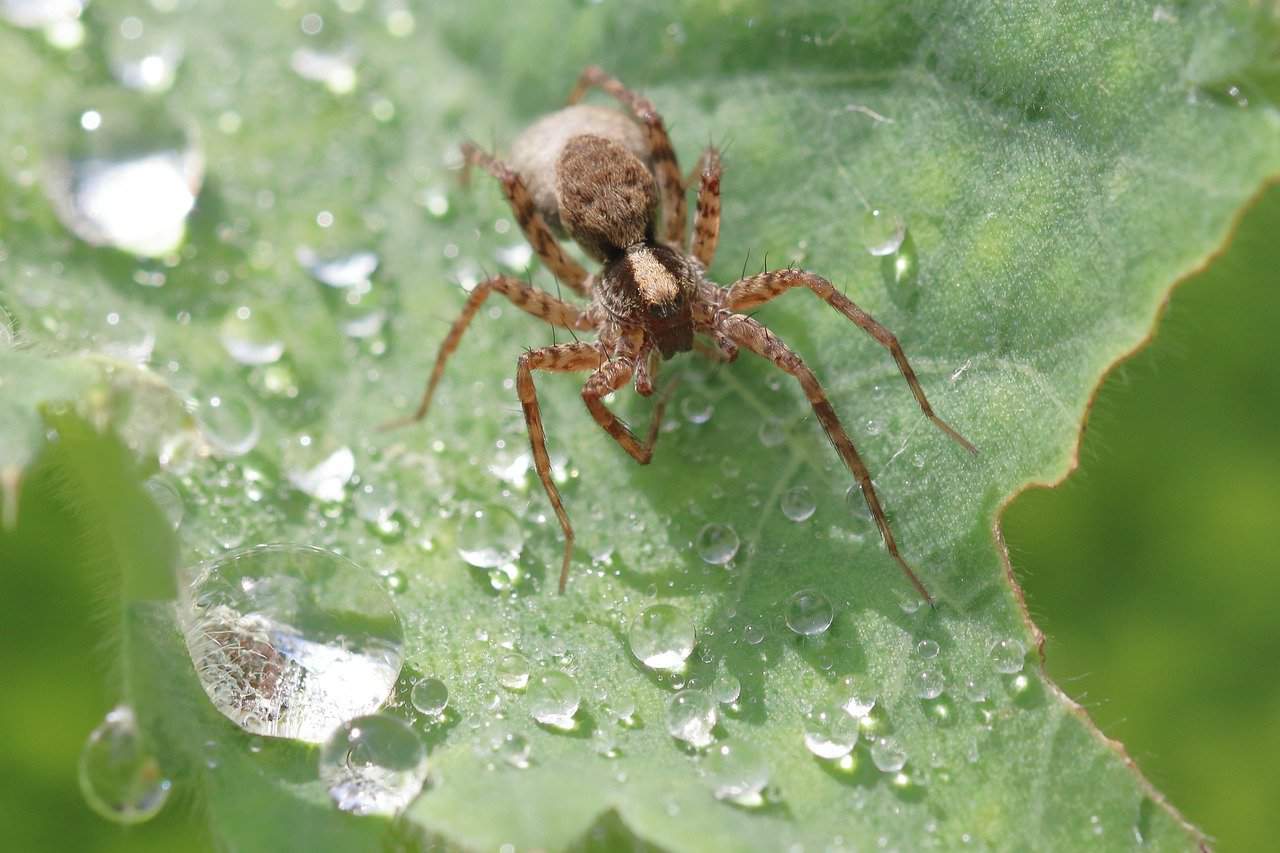We have many spiders in Missouri. There are more than 470 individual species in the state. But, we're going to focus on the spiders that live in our gardens, get into our sheds and garages, crawl up through our wall voids, live in our attic spaces, and crawl around in our homes. While spiders are mostly beneficial creatures that reduce the populations of dangerous insects, like mosquitoes and ticks, and control harmful pests that can damage the vegetables in our gardens, they can cause issues if they are not properly managed. Here are the common spiders you'll find on your Missouri land, and what you need to know most.
What Are the Most Common Types of Spiders in Missouri?
The most common spiders in Missouri are:
Are There Poisonous Spiders in Missouri?
The most common poisonous spiders in Missouri are:
The Common House Spider
There are many spiders that are considered to be common house spiders but only one bears the name. It is Parasteatoda tepidariorum. While it is known internationally as the American house spider, it is simply the common house spider here in the states. This species of spider is generally only about 6 mm long and has a large bulbous abdomen. This large abdomen is the trait you'll notice first–if you notice these spiders at all. Usually, you'll only see their webs clinging in the high corners of your common areas. A single house spider can maintain multiple webs. If you see a spider in your house in Missouri, it's most like just the Common House Spider or Parasteatoda tepidariorum. Nearly all of Missouri spiders are pretty harmless, so you really don't have to worry too much about being bitten or being harmed by them.
While the common house spider can bite, and it does have venom, it is not going to leave more than an itchy welt. They are considered nuisance pests when they come out into common areas. Removing their webs, keeping the inside of your home well ventilated, and reducing flies are the best ways to keep this spider out of sight and out of mind.
Cellar Spiders
The cellar spider, known scientifically as Pholcus phalangioides, is a spider that loves moisture and can be found, as its name suggests, in damp, dark areas. These spiders have a tiny body and long legs and are sometimes referred to as daddy long legs, though that name is shared with another creature known as a harvester, which is not a spider at all but, instead, an opilionids arachnid.
There is a myth that the daddy longlegs has the most deadly venom in the world but its mouth is too small to bite humans. This is wrong on both counts. Cellar spiders have mouthparts that are similar to brown recluse spiders, so they are able to bite. But, the venom of this spider has been shown to be weak when administered to other bugs. If you are seeing Cellar Spiders in your Missouri home, that generally means they have found a food supply that makes them want to stay. This could be ants, small moths, flies, or other small insects. This could be a moisture problem or simply because there is a food source available.
Wolf Spiders
You would expect that a spider with "wolf" in its name would be hairy, and this spider doesn't disappoint. Of the spiders listed on this page, the wolf spider is the largest and hairiest. It is also the only common spider that has a bite you're likely to remember. Be careful when digging into a box that has been stored in an attic space, exterior closet, shed, garage, barn, or outbuilding. Wolf spiders in Missouri are relatively common, and they might seem frightening because they're a bit larger than other spiders. That being said, these wolf spiders actually hunt quite a bit of other spiders and insects, so they aren't necessarily a bad neighbor to have, as long as they are outside your home!
The most notable trait of a wolf spider is that it will sometimes use holes dug by other animals. This is because the wolf spider, keeping true to its name again, is a predatory arachnid that does not create a web. It relies on it exceptional eyesight to locate and take down its prey. If you see a hole in your yard, be aware that this spider could be inside, waiting for prey to appear.
Brown Recluse
As their name implies, brown recluse spiders prefer to be in secluded areas away from humans. When they get into homes, they often explore attic spaces, spare rooms, and wall voids but they can come out into common areas when things get quiet.
With these spiders, it is always a good idea to check shoes and clothing before putting them on. Bites from the brown recluse happen most often when they are brought into contact with the skin. The Brown Recluse is one of two poisonous spiders in Missouri. They are found in most of the continental United States, and generally speaking are pretty docile but if spooked or threatened they aren't afraid to defend themselves.
The venom of the brown recluse has narcotic properties and can result in serious injury. See medical treatment if you receive a bite from this spider.
Black Widow
While not common in Missouri, black widow spiders can become a serious problem when they appear. The venom from these spiders is considered medically important and should be treated immediately. Be careful turning over rocks, construction material, and other objects in your yard to prevent bites. These are the second of the poisonous spiders in Missouri and are extremely rare, but if you do spot one you need to be very careful. If you spot one in or around your home I'd suggest calling a professional pest service, because where there's one, there might be others.
How to Identify Brown Recluse Spiders
They range in size from ¼- ½ inch and 1 ¼- 2 inches in total leg span. Tan to dark brown in color, brown recluse spiders have a distinctive dark violin shape found behind their head. People are most often bitten after accidentally rolling on one in bed, or putting on clothing that has one hiding in it. A bite from the brown recluse introduces cytotoxic venom into its victim, which could result in the skin and tissue around the bite to die and slough off. This can result in a deep ulcer forming that if left untreated can become severely infected and become very difficult to heal. Like with black widows, if you are bitten by brown recluse spiders you should talk to your doctor or if closed, seek out medical attention.
How to Identify Black Widow Spiders
The black widow spider is often found outdoors in woodpiles but also in outbuildings and dark secluded areas of your home. They are not aggressive and will generally try to stay hidden from you; biting only if threatened or defending their egg sac. Female black widows can reach 1 ½ inch in length with their legs extended, males are about half of the size. They are glossy black in color with a distinct reddish-orange hour-glass shape on their belly. Black widow spiders are often introduced to the St. Louis area after being transported unknowingly in shipments from southern areas. They then can easily adapt and establish themselves in homes, garages, warehouses, and factories. A black widow spider bite can affect a victim’s nervous system, causing muscle cramps, fever, nausea, and disorientation. While people do become very ill they generally recover without any lasting damage, an exception to this is the very young, elderly, or ill. If you are bitten by a black widow, it is best to seek medical attention.
What Attracts Poisonous Spiders to My Home?
- Food
- Shelter
There are conditions that attract black widows and brown recluse spiders to a home. Spiders are only concerned about two primary factors. They are looking for a spot that has the food they eat, and they want the location to provide them with the shelter they need. If your home has food sources that poisonous spiders dine on, they will be lured in. Black widows eat grasshoppers, beetles, mosquitoes, and other insects. Brown recluse spiders are looking for cockroaches, crickets, and other large bugs. Since both of these arachnids feed on big bugs, the fewer you have around your home, the better off you'll be. That is why one of the best things you can do to keep poisonous spiders away is to keep your lawn mowed and weeds pulled up. It is also a good idea to not have clutter in your yard, especially stacked construction materials. These are ideal places of shelter for spiders.
How Do I Prevent Spiders from Entering My Home?
In order to help protect you and your family from spiders, there are some precautions that you should take around your home. In order to stop them from making their way into your home from outdoors you should:
- Inspect your doors and windows for any gaps and caulk any that are present.
- Take a look at your screens to make sure that they are completely intact and if not they should be replaced or repaired.
- Inspect your foundation for cracks and crevices; any that are found should be sealed.
- Trim back trees and bushes that touch the exterior of your house so that spiders cannot hide in them or use their branches as a bridge.
- Check packages and bags for spiders before bringing inside.
How Do I Prevent Spider Bites?
- Keep your clothing, bedding, and other miscellaneous items off the floor.
- If the clothes or shoes you are about to put on have been in storage for a while, shake them out first.
- Before going to bed, inspect your sheets, blankets, and bed skirt.
- Keep items in storage, even children’s toys, sealed in plastic totes with tight closing lids.
- Reduce clutter around the home especially in more secluded storage rooms (aka spider-friendly rooms).
- Do not handle live spiders.
If you need assistance keeping spiders and other pests under control, let the educated St. Louis pest professionals here at Rottler Pest Solutions put in place a plan that will keep you, your family, and your pets safe.


